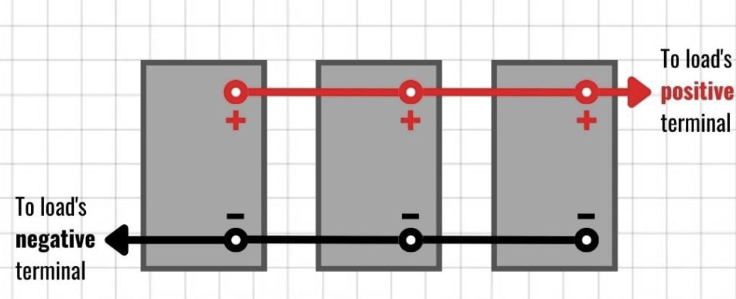kwb78
Member
The challenge of making the 2 batteries share load and charging evenly is removed and make wiring simpler.
When you wire two batteries together in parallel, you should take the positive from one battery and the negative from the other. That means the current passes through the both the positive and negative interconnections and should discharge the batteries equally. Like this:

If you do it with the load connected to one battery, with the others in a string from that you will get unequal discharge due to the resistance of the interconnecting cables. The battery nearest the load will discharge more than the other.
Connected as above, there should be no problem with equal charging or discharging and they will self balance.
